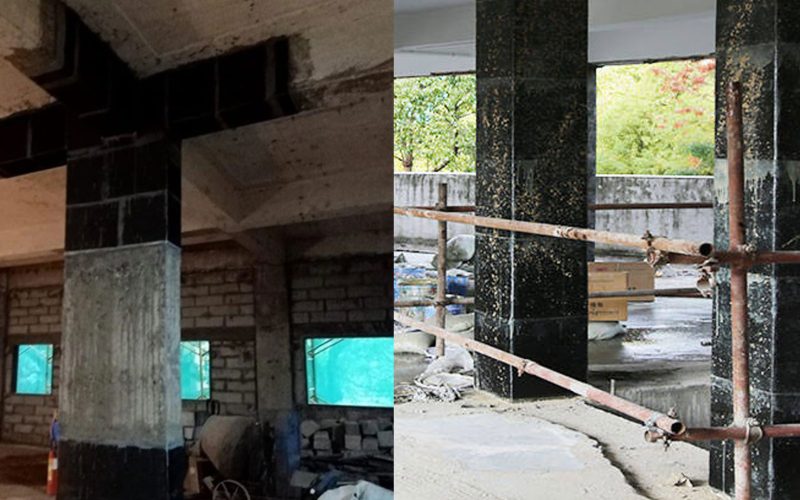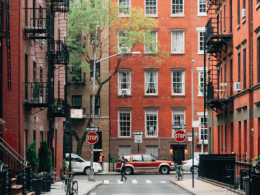Introduction
In India, the safety of buildings is not just a matter of infrastructure it’s a matter of life. The frequent tremors and occasional earthquakes in seismically active regions demand resilient construction. Sadly, many old buildings were not designed with seismic resistance in mind. That’s where Column Jacketing comes into play a modern yet practical solution to reinforce existing columns for better earthquake resistance and long-term stability.
Why Seismic Retrofitting Is Crucial for India
India lies on several active seismic zones. States like Uttarakhand, Himachal Pradesh, Gujarat, and even parts of Delhi are highly vulnerable.
Every year, minor quakes send shockwaves through old buildings, exposing their structural weaknesses. Therefore, retrofitting old buildings is no longer optional—it’s essential. Among various retrofitting techniques, Column Jacketing stands out as one of the most effective for enhancing structural integrity, especially during seismic events.
What Is Column Jacketing?
Column Jacketing is a method of strengthening existing concrete or masonry columns. It involves encasing the existing column with additional concrete, steel, or advanced fiber materials. This added jacket increases the column’s size and load-bearing capacity. More importantly, it significantly improves the column’s ductility and shear strength—both vital for seismic resistance.
Due to its reliability and cost-efficiency, this method is gaining popularity in India, especially in retrofitting government buildings, hospitals, and educational institutions.
When Is Column Jacketing Required?
Not every building needs Column Jacketing, but several signs suggest it may be time:
- Visible cracks in vertical columns.
- Reduced load-bearing capacity after years of use.
- Corrosion in reinforcement bars.
- Building located in seismic zones.
- Change in usage, like converting a residential unit into a commercial space.
In all these cases, column strengthening can make the structure safe again. Hence, consulting with structural engineers early can help avoid bigger issues later.
Types of Column Jacketing Techniques
Depending on the requirement, several methods can be adopted:
- Concrete Jacketing: Involves increasing the size of the column by adding steel reinforcement and new concrete. Common and cost-effective.
- Steel Jacketing: Uses steel plates or angles wrapped around columns. Fast and highly durable.
- FRP Jacketing: Utilizes Fiber Reinforced Polymers. Lightweight and corrosion-resistant, this is ideal for heritage structures.
- Composite Jacketing: A mix of materials to ensure enhanced performance under both vertical and lateral loads.
Every method offers unique benefits, but in India, concrete and composite techniques are widely preferred due to local material availability.
Benefits of Column Jacketing
Choosing Column Jacketing offers a wide range of structural and economic advantages:
- Increased Load Capacity: Helps support additional floors or usage change.
- Seismic Strengthening: Boosts lateral resistance during earthquakes.
- Extended Life: Slows down aging, corrosion, and deterioration of columns.
- Cost-effective: Cheaper than rebuilding or complete reconstruction.
- Minimal Disruption: Can often be done while the building is still occupied.
These advantages make this technique a practical solution, especially in Indian metros where relocation is difficult during repairs.
Challenges in Indian Structural Retrofitting
Although Column Jacketing is effective, India faces unique challenges during retrofitting projects.
Space limitations in urban areas make it difficult to increase column size. There’s also the issue of material availability in tier-2 and tier-3 cities. Furthermore, many buildings have undocumented or poorly maintained structural plans, making assessment harder.
Despite these hurdles, proper planning, skilled labour, and certified materials can ensure successful retrofitting without compromising on quality.
Best Practices for Successful Column Jacketing
In India, where building norms can vary from state to state, following best practices ensures safety and durability:
- Conduct detailed structural audit before starting.
- Use IS-code-approved materials.
- Ensure proper surface preparation for bonding.
- Cure concrete jackets properly to avoid shrinkage.
- Coordinate with experienced structural engineers and licensed contractors.
By implementing these measures, Column Jacketing projects become more reliable, compliant, and sustainable.
Role of Structural Engineers in Retrofitting Projects
No retrofitting project can be successful without expert evaluation.
Structural engineers in India are trained to assess risk factors, design reinforcement plans, and oversee construction. Their job becomes even more crucial in seismic zones. They also verify if Column Jacketing is sufficient or if beam and slab retrofitting is also necessary.
Collaborating with professionals ensures compliance with National Building Code (NBC) and local regulations.
Government Guidelines and Support
The Indian government has been proactive in updating building codes and promoting retrofitting awareness.
Schemes like PMAY (Pradhan Mantri Awas Yojana) and AMRUT focus on urban resilience. Moreover, municipalities in seismic zones often encourage or mandate strengthening measures, including Column Jacketing, especially in schools and hospitals.
Builders and homeowners should stay informed and leverage such schemes to ensure safer structures.
Cost of Column Jacketing in India
The cost of Column Jacketing varies based on material, column size, and project scale.
Typically, concrete jacketing costs between ₹1,500 to ₹3,000 per square foot. Steel or FRP options may be slightly more expensive but offer higher strength-to-weight ratios. In India, where budget constraints are real, the concrete method remains the most economical.
Additionally, retrofitting saves money in the long run by preventing costly post-earthquake damages.
Case Studies from Indian Cities
Several Indian cities have already witnessed successful retrofitting with Column Jacketing:
- In Gujarat, post-2001 earthquake, thousands of buildings were strengthened using this method.
- In Delhi, heritage structures and schools have undergone jacketing for improved safety.
- Chennai and Bangalore are slowly adopting this in aging apartment complexes.
These examples show how this technique is being trusted across various regions and building types.
How to Choose the Right Contractor
A key step in any retrofitting plan is choosing a skilled contractor.
Look for teams with experience in Column Jacketing. Check past projects, customer reviews, and whether they work with licensed engineers. Request detailed quotes and timelines.
In India, word-of-mouth referrals are still a reliable way to identify quality service providers. Don’t compromise, especially when structural safety is on the line.
Maintenance and Monitoring After Jacketing
Once Column Jacketing is completed, regular inspection becomes essential.
Although jackets last for decades, cracks, corrosion, or bonding failure can still occur. Therefore, conduct annual audits and monitor changes. This is particularly important for commercial and public buildings in India, which face high usage and environmental wear.
Timely maintenance ensures the full benefits of retrofitting are preserved for the building’s lifetime.
Future of Retrofitting in Indian Infrastructure
As urbanization accelerates, retrofitting will be a necessity rather than an option.
Smart cities, increased earthquake awareness, and better materials are driving adoption of techniques like Column Jacketing. Moreover, digital modeling and AI-based audits are making evaluations quicker and more accurate.
With the government’s push toward sustainable development, India is poised for a retrofitting revolution.
Making Safety a Structural Priority
In a country where both natural forces and rapid development pose risks to buildings, proactive solutions are vital.
Column Jacketing emerges as one of the most impactful, affordable, and accessible structural interventions for India’s built environment. Whether it’s old apartments, educational institutions, or public infrastructure, jacketing ensures they’re safe, compliant, and resilient.












